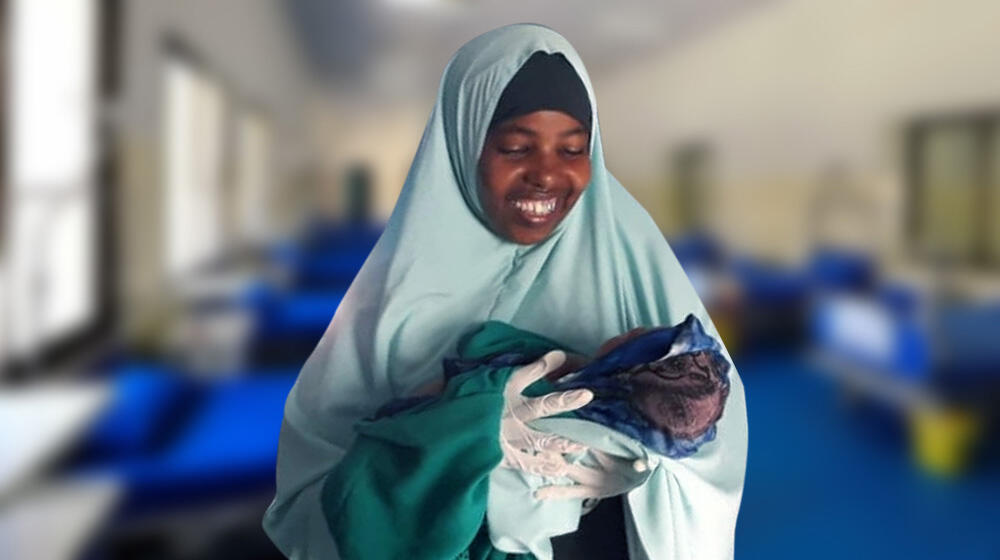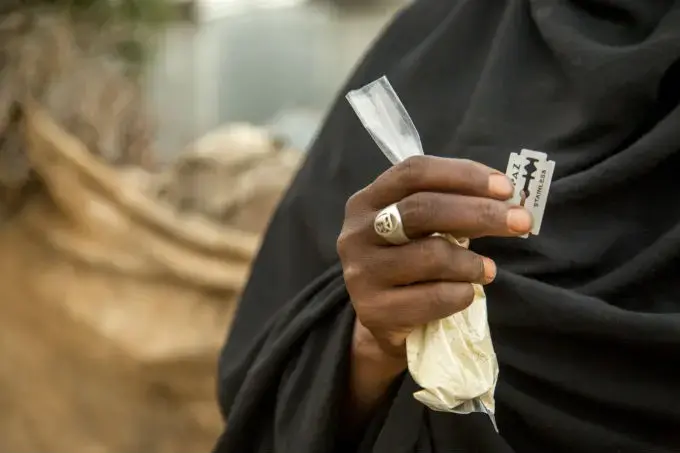Fatima Abdullahi has five years of experience working as a midwife in Hudur District in the Bakol region of Somalia. Fatima managed to overcome the socio-economic challenges facing young Somali women by enrolling in a UNFPA-supported midwifery training program, where she learnt new skills and graduated as a qualified midwife. Fatima is using her midwifery skills to provide better health services in her community, especially in Moora Gabey village where there is a lack of infrastructure and an acute need for health workers. Some two years have passed since Fatima first assisted a woman giving birth, but she remembers it as it was yesterday.
When Fatima was providing Sexual and Reproductive Health (SRH) services in her community, she suddenly heard women shouting. She entered the house from where the shouting came and found a woman in labour, assisted by a traditional birth attendant. The traditional birth attendant was elderly and Fatima remembers that the woman was struggling to see what she was doing, due to her old age. Fatima then realized that the labouring woman was not a woman at all, but rather a 14-year-old girl. At this age, childbirth can be deadly for both the mother and baby, and Fatima remembers thinking that “this child should be in school, not giving birth to a baby”.
In addition to being a child herself, the young girl had been subjected to Female Genital Mutilation (FGM), resulting in the need for an episiotomy[1] to ensure the safe delivery of the baby. When the baby finally arrived, it was struggling to breathe and the new mother was severely anemic. “I immediately resuscitated both the baby and the mother and they survived because I was there to attend to them,” Fatima recalls.
“It may seem like this mother and baby were lucky to be attended by a qualified midwife, but I want this to have nothing to do with luck. I want this assistance to be made routinely available for everyone. I want for properly trained and qualified midwives to be available in remote and underserved areas where they are most needed and able to save lives,” Fatima concludes.
[1] An episiotomy is a cut in the area between the vagina and anus (perineum) during childbirth, allowing the baby to come through it more easily.





